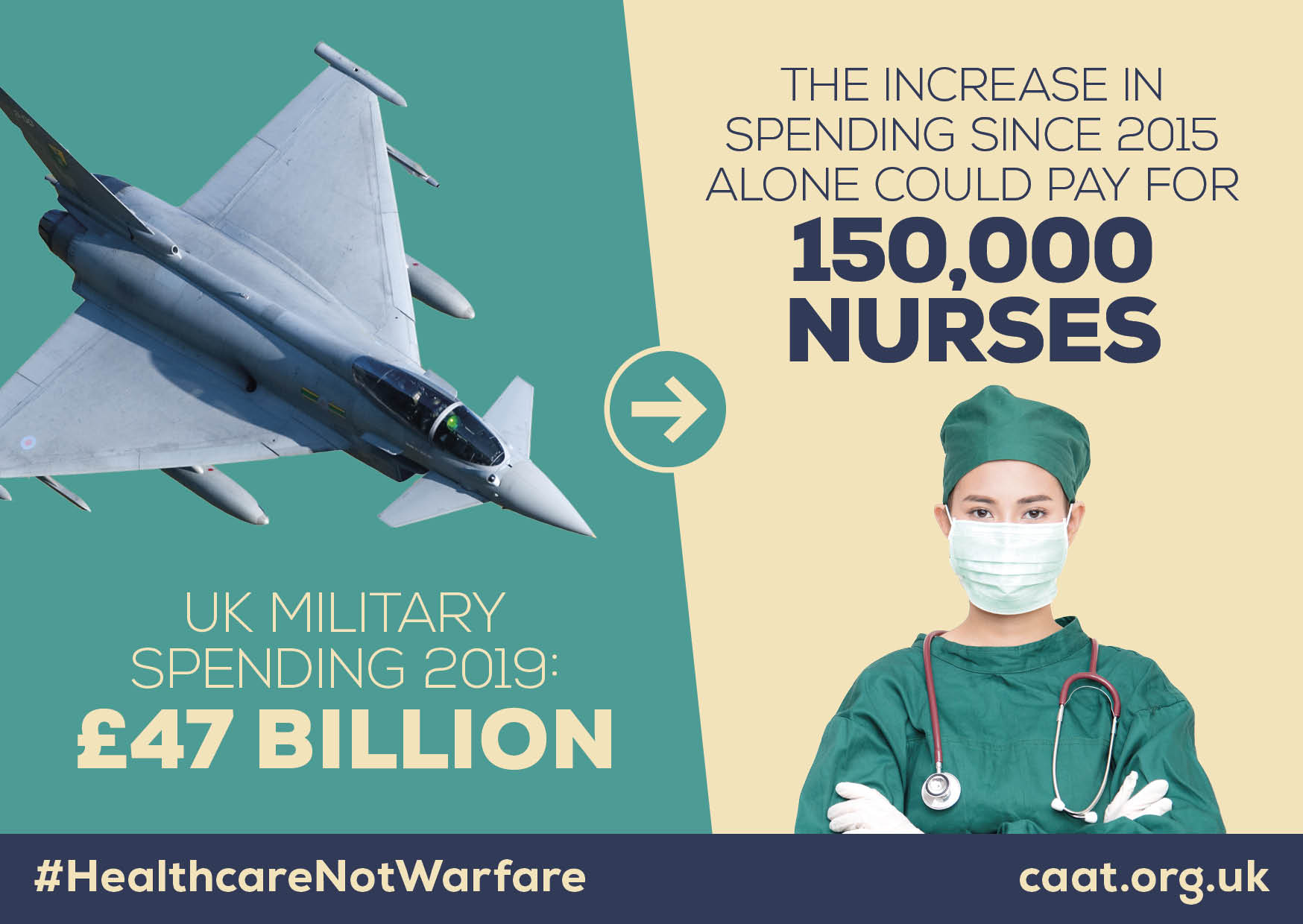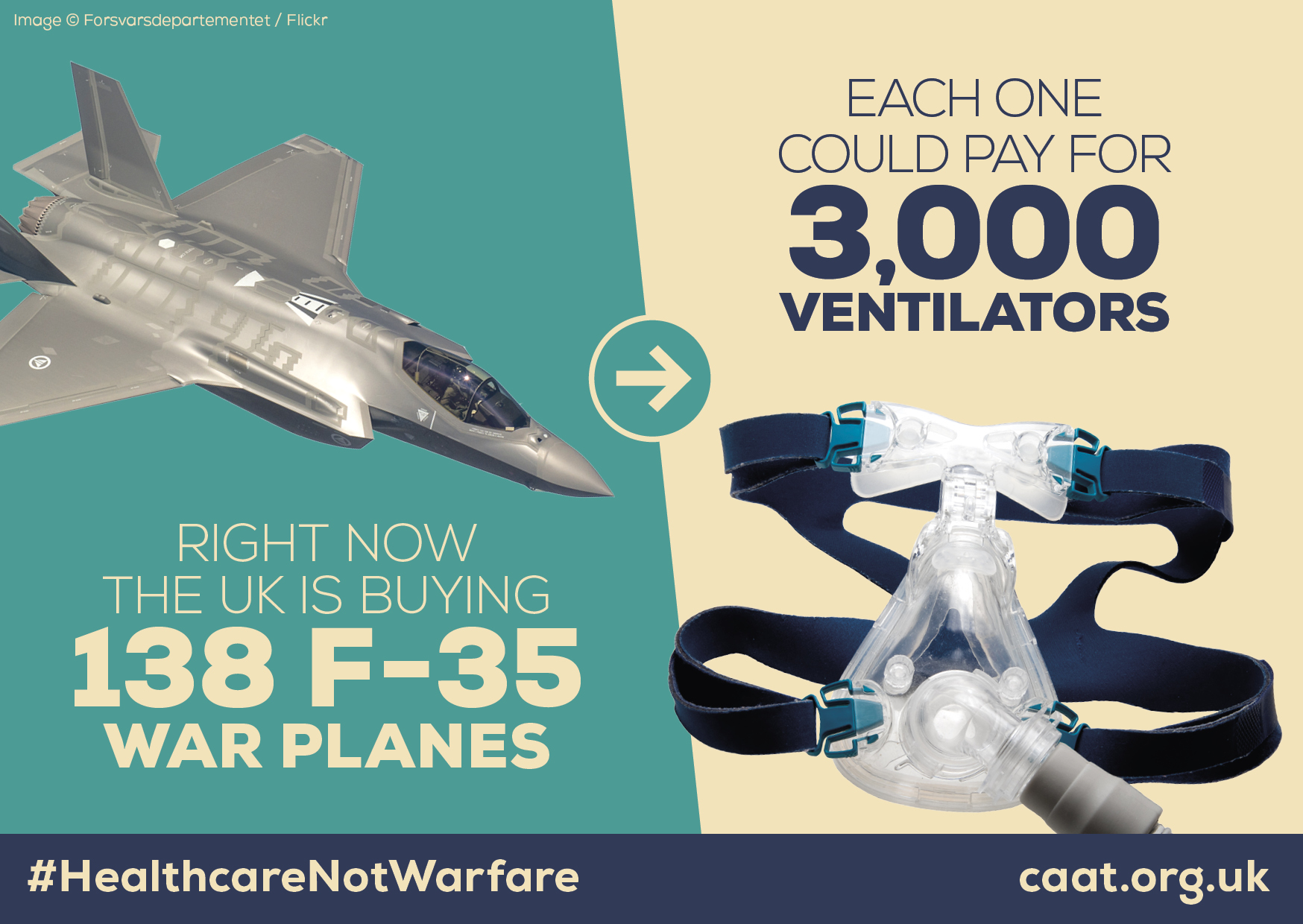Last year, as the world unknowingly stood on the brink of the worst international crisis since World War Two in the form of the Coronavirus pandemic, its nations stood very well prepared… for war.
According to data published today by the Stockholm International Peace Research Institute (SIPRI), world military spending in 2019 amounted to at least $1,917 billion.
This was 3.6% higher in real terms than in 2018, and sets a new record in the post-World War Two era. SIPRI’s fact sheet gives details and analysis of trends among the top spenders and in each region.

Top Spenders
The charge was led by the USA, by far the world’s top spender, who increased spending by 5.3% to reach $732 billion, following spending deals agreed by Trump and Congress. It is set to increase still further in 2020, but is still 15% lower in real terms than its peak in 2010 under the Obama Administration.
But it was not just the USA pursuing this relentless militaristic strategy. China, India and Russia, in 2nd, 3rd and 4th place, all made significant increases, with only Saudi Arabia of the top 5 cutting spending by 16%, in the face of falling oil prices and a large budget deficit. At 8% of GDP, Saudi Arabia’s military spending is still one of the highest shares of the national economy in the world, and the cut has not stopped their ruthless bombardment and blockade of Yemen.

Middle East
Almost all regions increased spending in 2019, except the Middle East, where again falling oil prices have hit state budgets, although the region remains by far the most heavily militarised in the world, in terms of spending, arms imports, and armed conflict.
Figures for the region are highly uncertain due to a severe lack of transparency – the UAE and Qatar, for example, provide no information on their military spending, and SIPRI do not even attempt to estimate a figure (although one industry consultancy estimates the UAE’s spending at around $26 billion a year).
In other countries, such as Bahrain, official figures likely hide large quantities of off-budget spending, as one recent report revealed. In most of the Gulf states, military spending is the sole prerogative of the ruling monarch, a recipe for massive corruption and plunder. These are precisely the states that are the UK’s most sought-after arms customers, of course.
UK spending increases 11% in 5 years
As for the UK, SIPRI’s figure of £38 billion ($49 billion) is based on an MOD measure that leaves out several significant items normally counted in their definition, such as additional payments to the Armed Forces Pension Fund by the Treasury. The more comprehensive figure reported by NATO shows UK spending in 2019-20 of £46.9 billion ($61 billion), an increase of 1.5% in real terms over 2018-19, and almost 11% since 2015.
Just the increase since 2015 would be enough to pay the annual salaries of 150,000 nurses, while the cost of acquiring 10 of the 138 F-35 fighter jets the UK is buying would pay for 30,000 ventilators.

As discussed in CAAT’s recent report, Fighting the Wrong Battles, the UK has continued to prioritise military power as the central plank of security, pursuing a dangerous and implausible vision of global military power, while failing to take adequate measures to address the climate crisis – or, as we can now see, to prepare for the threat of a global pandemic.
Real human security
Government ministers have been obsessed with visions of aircraft carrier battlegroups sailing through the South China Sea, flying the Union Jack, and showing the Chinese (who, with their far more powerful military, would probably be quietly amused) what’s what. Or winning magnificent trade deals for ‘Global Britain’ on the back of such impressive displays of military prowess.
So they have pumped money into prestige weapons projects – the UK is planning to spend £188 billion on weapons systems over the next 10 years – while utterly failing to equip the country to deal with real threats to security and well-being.
A pandemic response exercise in 2016, Exercise Cygnus, showed that the NHS would be unable to cope with such a scenario, but the recommendations from this were ignored. Just last year, the government was warned to prepare for a coronavirus pandemic, including by stockpiling Personal Protective Equipment and developing a testing and tracing capability. Once again, nothing was done.
But we are told that we must spare no expense on nuclear weapons, aircraft carriers, and the most advanced fighter aircraft, because we need an ‘insurance policy’ against the worst case scenario, however improbable.

But, as the SIPRI figures show, the UK is far from the only country pursuing this course, nor even the worst offender. From Brazil to Mali to Syria and Yemen to Afghanistan to Kashmir to Indonesian-occupied West Papua, states are pursuing militarized approaches to problems, frequently failing even on their own terms, or at best sewing dragon’s teeth through the violent repression of grievances.
World military spending is twelve and a half times the total Official Development Assistance provided by OECD member states to the developing world.
It is is three and a half times global spending to combat climate change (which whilst increasing, is still far too low to halt the growing catastrophe).
While we’re talking doom and gloom though, we should mention one country that has been consistently at the bottom of the military expenditure tables, with a very steady level of spending since 1948 – zero. Costa Rica abolished its armed forces back then, and has now gone over 70 years without invasion or civil war.
The world urgently needs to look to the example of Costa Rica, and rethink security to redirect resources to tackling the real problems that lead to human suffering and insecurity – climate change, disease, poverty, inequality, and repression.
Find out more about the new SIPRI data.
